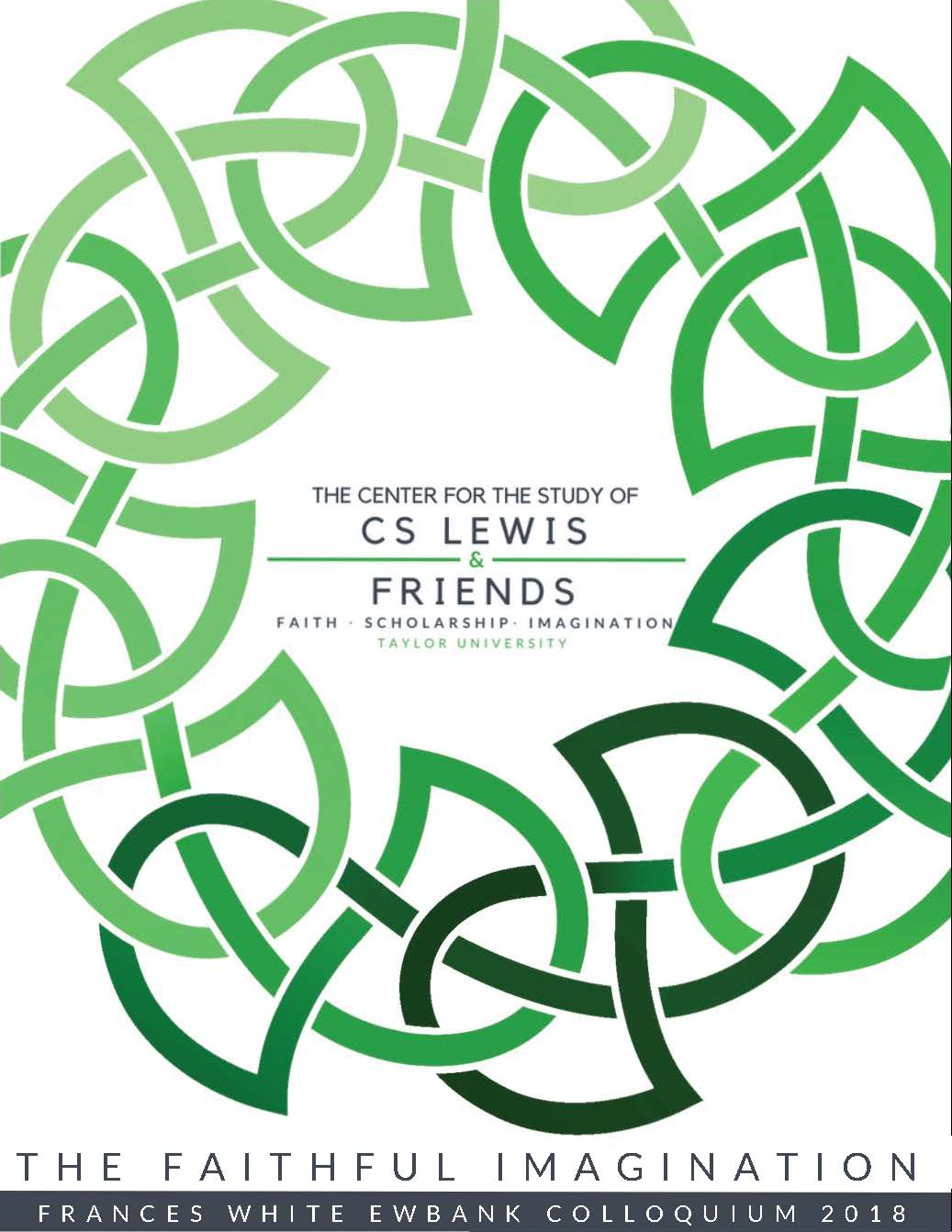Event Title
Concurrent Paper Session 4A: The Green Imagination
Location
Euler 062/063
Start Date
1-6-2018 1:45 PM
Description
"Tolkien's and Shakespeare's People-Trees" - Grace Tiffany
This paper will discuss Tolkien’s Ents’ and Huorns’ rootedness in Shakespeare’s failure (as Tolkien saw it) to make actual trees walk when he had a chance, in the Birnam Wood scene in Macbeth. The paper will go deeper to discuss the contrast between Tolkien’s “faery” and Shakespeare’s political theater, since this contrast accounts for these two authors’ radically different uses of trees. In Tolkien’s The Lord of the Rings, “magical” trees are independent characters in a non-allegorical “other-world.” In Shakespeare’s Macbeth and other plays, tree-magic signifies humans’ destructiveness or redemptive creativity. Trees are the tools by which either quality is manifested.
"Faith Awakened in the Woods of Narnia" - James Stockton
C. S. Lewis’s Narnia is a magical world wherein natural entities are often portrayed as harbingers of faith, particularly so the trees. Although sacred trees and forests are common to fairyland and the epic fantasy genre, the woods of Narnia are unique in that they play a subtle but significant role in enhancing the didactic relationship between Aslan and many, if not all, of the other characters in the storyline. To bring this point (as well as a few others) forward I will offer a brief analysis of five examples wherein the characterization of and interaction with a tree, or trees, helps develop a sense of virtue and/or religiosity. Collectively, these five instances of Narnian tree lore remind us, as Mr. Beaver tells the Pevensie children, that Aslan is “the King. The Lord of the whole wood” and the woods answer to his roar.
"Surprised by Walking: C.S. Lewis's Access to 'A Channel of Adoration'" - Kyoko Yuasa
C. S. Lewis’s conversion to Christianity is often discussed in connection with his walk with Tolkien on the Addison’s Walk, but not so much with how the wind occurring during his walk is related to Lewis’s faith in Christ. In Letters to Malcolm, Lewis describes how a walker in nature discovers how to approach God through “a channel of adoration.” He does not mean that nature is divine but that the joyous feelings of being in nature are a channel to search for God. This idea of a channel is found in Lewis’s poem “The Future of Forestry.” The poem is often read as an ecological work that warns of the destruction of nature and the crisis of humanity, but it is worth noting that it ends with “the treedelighted Eden.” The ending can be seen as reflecting Lewis’s understanding of the gospel
of Christ as the completion of mythology. My presentation will analyze Lewis’s conversations with his friends while walking, based on his autobiography, the collection of his letters, and Letters to Malcolm, and reveal that “a channel of adoration” is one of the key concepts in his poem “The Future of Forestry,” and also The Chronicles of Narnia.
Event Type
Paper
Concurrent Paper Session 4A: The Green Imagination
Euler 062/063
"Tolkien's and Shakespeare's People-Trees" - Grace Tiffany
This paper will discuss Tolkien’s Ents’ and Huorns’ rootedness in Shakespeare’s failure (as Tolkien saw it) to make actual trees walk when he had a chance, in the Birnam Wood scene in Macbeth. The paper will go deeper to discuss the contrast between Tolkien’s “faery” and Shakespeare’s political theater, since this contrast accounts for these two authors’ radically different uses of trees. In Tolkien’s The Lord of the Rings, “magical” trees are independent characters in a non-allegorical “other-world.” In Shakespeare’s Macbeth and other plays, tree-magic signifies humans’ destructiveness or redemptive creativity. Trees are the tools by which either quality is manifested.
"Faith Awakened in the Woods of Narnia" - James Stockton
C. S. Lewis’s Narnia is a magical world wherein natural entities are often portrayed as harbingers of faith, particularly so the trees. Although sacred trees and forests are common to fairyland and the epic fantasy genre, the woods of Narnia are unique in that they play a subtle but significant role in enhancing the didactic relationship between Aslan and many, if not all, of the other characters in the storyline. To bring this point (as well as a few others) forward I will offer a brief analysis of five examples wherein the characterization of and interaction with a tree, or trees, helps develop a sense of virtue and/or religiosity. Collectively, these five instances of Narnian tree lore remind us, as Mr. Beaver tells the Pevensie children, that Aslan is “the King. The Lord of the whole wood” and the woods answer to his roar.
"Surprised by Walking: C.S. Lewis's Access to 'A Channel of Adoration'" - Kyoko Yuasa
C. S. Lewis’s conversion to Christianity is often discussed in connection with his walk with Tolkien on the Addison’s Walk, but not so much with how the wind occurring during his walk is related to Lewis’s faith in Christ. In Letters to Malcolm, Lewis describes how a walker in nature discovers how to approach God through “a channel of adoration.” He does not mean that nature is divine but that the joyous feelings of being in nature are a channel to search for God. This idea of a channel is found in Lewis’s poem “The Future of Forestry.” The poem is often read as an ecological work that warns of the destruction of nature and the crisis of humanity, but it is worth noting that it ends with “the treedelighted Eden.” The ending can be seen as reflecting Lewis’s understanding of the gospel
of Christ as the completion of mythology. My presentation will analyze Lewis’s conversations with his friends while walking, based on his autobiography, the collection of his letters, and Letters to Malcolm, and reveal that “a channel of adoration” is one of the key concepts in his poem “The Future of Forestry,” and also The Chronicles of Narnia.


